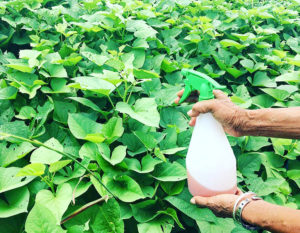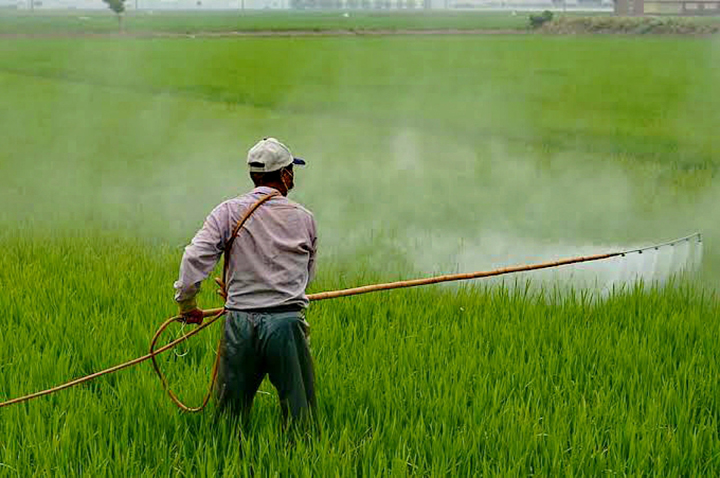The government’s proposal to ban 27 generic pesticides for being harmful to humans and animals has created a buzz among pesticide agrochemical companies. Here’s why
Pesticide poisoning is one of the leading causes of suicide. It accounts for 14–20% of global suicides — an estimated 110,000–168,000 deaths each year. A recent research study says banning the Highly Hazardous Pesticides (HHPs) has been successful in preventing deaths linked with pesticides.
The study titled ‘Suicide by Pesticide Poisoning in India: A review of Pesticide Regulations and their Impact on Suicide Trends’ collated information on pesticides from agriculture departments of the central government and all 29 state governments (except union territories), and National Crime Records Bureau (NCRB) data on suicides from 1995 to 2015. It investigated the effects of pesticide ban on reducing the number of suicides in Kerala as well as nationally.
NCRB data shows that from 1995 to 2015, pesticides were used in 441,918 reported suicides in India, 90.3% of which occurred in 11 of the 29 states. “There was statistical evidence of lower than expected rates of pesticide suicides (rate ratio [RR] 0.52, 95% CI 0.49–0.54) and total suicides nationally by 2014 (0.90, 0.87–0.93) — after the 2011 endosulfan ban. In Kerala, there was a lower than expected rate of pesticide suicides (0.45, 0.42–0.49), but no change to the already decreasing trend in total suicides (1.02, 1.00–1.05) after the 2011 ban of 14 pesticides. The 2005 ban on endosulfan showed a similar effect – lower than expected pesticide suicides (0.79, 0.64–0.99), but no change in the decreasing trend of total suicides (0.97, 0.93–1.02) in 2010. There was no evidence of a decline in agricultural outputs following the bans,” says the study report.
On 14 May, the Ministry of agriculture and farmer welfare, proposed to ban 27 pesticides such as Carbendazim and Monocrotophos, for being harmful to humans and animals. These are widely used by Indian farmers. In the notification, the ministry had asked all stakeholders to submit their objections and suggestions till June 27.

The draft notification, called ‘Banning of Insecticides Order 2020’, prohibits the import, manufacture, sale, transport, distribution and use of 27 pesticides, including Acephate, Atrazine, Benfuracarb, Butachlor, Captan, Carbofuran, Chlorpyriphos, 2,4-D, Deltamethrin, Dicofol, Dimethoate, Dinocap, Diuron, Malathion, Mancozeb, Methomyl, Oxyfluorfen, Pendimethalin, Quinalphos and Sulfosulfuron. The chemical Malathion was widely used by the government during the locust attack.
This decision created a buzz among pesticide agrochemical companies. They are getting ready for a legal battle if the government goes on with the ban of 27 generic pesticides.
On 9 June, Pradip Dave, the President of Pesticides Manufacturers & Formulators Association of India (PMFAI), told media in a digital press conference that the ban will shrink India’s export by more than 50 per cent, defeating the government’s goal of ‘Atmnirbhar Bharat’ (Self-Reliant India). On top of that, it will hand over a market worth ₹12,000 crore to Chinese competitors.
He pointed out that the Anupam Verma committee that recommended this ban acted arbitrarily and demanded that a high-powered scientific committee be appointed to look into the Verma committee.
The committee was set up in 2013 to review 66 harmful pesticides that are banned in several other countries. Anupam Verma, who retired as a professor from Indian Agriculture Research Institute (IARI), is currently president of the World Society of Virology. The committee recommended a ban on 19 pesticide in a phased manner in 2015 and also recommended review of 27 other pesticides. Acting on this recommendation, the government banned 18 pesticides in 2018 which included seven Class-I pesticides (those that are extremely hazardous to use.)
In a new draft the government is intending to ban these 27 pesticides.
NGOs working in the field of pesticide control welcomed this move. Pesticide Action Network (PAN), while welcoming the move, demanded that the government consider the remaining pesticides with the same stringent criteria. Jayakumar Chelaton, Director of PAN India said, “This is a hopeful move by the Indian government for protecting public health and environmental well-being. Many of the pesticides proposed for ban are implicated in both occupational and self poisoning in India. Banning them is expected to bring down poisoning incidence and ensure a safe working farm environment in the country. PAN India is happy to support the government of India for eliminating toxic pesticides by replacing them with agro-ecological farming practice.”
As per PAN India analysis, 289 pesticides are registered for use in India and banning only 27 would not impact food security as alternatives are available to farmers.
The Centre for Science and Environment (CSE), a Delhi-based NGO, has also been highlighting the harmful effects of these pesticides and campaigning for the stricter regulation of Class-I pesticides. It was reported in October 2017 that within a four-month period, over 35 farmers died and several fell ill due to pesticide poisoning in the district of Yavatmal, Nagpur, Akola and Amravati.
Pesticides like Monocrotophos, Acephate and some others that are linked to the death of farmers, are also in the list of proposed bans.
(Cover: Pesticide poisoning accounts for 14–20% of global suicides)





